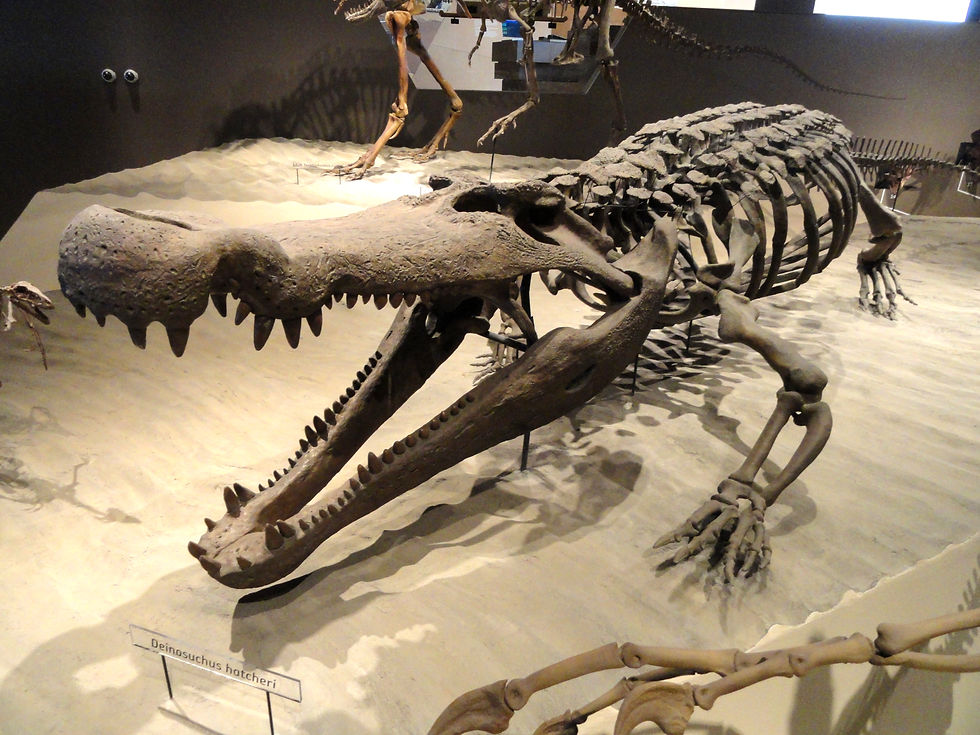Exploring the Fossils of California USA
- Wayne Munday
- Jun 20, 2023
- 5 min read
Updated: Dec 16, 2024
The geodiversity of California includes a wide range of geological features, including mountains, valleys, deserts, coastlines, fault zones and a state fossil of a saber toothed cat (Smilodon fatalis) and a state dinosaur of a duck-billed Hadrosaur (Augustynolophus morrisi).

California’s admission date as the 31st state to the union of the United States was on the 9th September 1850. California's admission to the United States was the result of the Mexican-American War, which ended in 1848 with the signing of the Treaty of Guadalupe Hidalgo. Under the terms of the treaty, Mexico ceded California to the United States.
The gold rush that began in 1848 had a significant impact on California's early development and future growth and today the State of California is the most populous U.S state's with over 39 million residents.
California has a diverse and complex geology due to its location at the intersection of the oceanic Pacific Tectonic Plate and the North American Tectonic Plate that covers the United States, Canada, Greenland, and parts of Iceland and Siberia.
The fossil record of California is rich and diverse and dates from single-celled bacteria from the Precambrian Era or the "Age of Early Life" through to the mega fauna of the Pleistocene Epoch the first of the two epochs of the Quaternary Period that ended over 11,800 years ago. One of the most prominent features of California's geology is its mountain ranges, which include the Sierra Nevada, the Cascade Range, the Coast Ranges, and the Transverse Ranges.
Smilodon fatalis
In 1973 the official state fossil of California was designated as the now extinct saber toothed cat (Smilodon californicus also known as Smilodon fatalis). The name Smilodon comes from the Greek for “blade” and “tooth” and fatalis meaning "deadly".
One of the largest and best-preserved collections of saber tooth cat bones in the world has been discovered at the La Brea Tar Pits in Los Angeles, California. This location is regarded as one of the richest and most famous fossil sites in the world.

Saber tooth cats were carnivorous mammals that lived during the Pleistocene epoch from between 1.8 million to 10,000 years ago. The Smilodon fatalis primarily inhabited North America though Smilodon fossil remains have also been found in other parts of the United States, as well as Mexico and South America.
The saber tooth cat is an extinct sub-family of the true cats known as Felidae. The ancestor to the saber tooth cat is believed to be the Megantereon an early machairodontine saber toothed cat that lived in North America, Eurasia, and Africa whose fossil remains have been dated back to the Miocene.

The term "machairodontine" is a term derived from the name of an ancient Greek bladed weapon called a makhaira.
These cats are best known for their long, flattened and curved serrated canine teeth that were most likely used for hunting and capturing prey.
Like many apex predators the saber tooth cat successfully hunted by ambushing their prey and used their strength and agility to overpower and subdue their quarry of large herbivorous mammals such as bison, horses, camels, and ground sloths in a grass and forest environment.
Other sub-families of saber tooth cats included the Homotherium and Machairodus that developed their own physical adaptations according to their environment and geographical radiation around the world.
Smilodons are not actually related to either modern day cats or tigers. In the North American region there were three species of Smilodon that prevailed including the Smilodon fatalis, Smilodon gracilis and the much larger Smilodon populator.

The Smilodon is believed to have become extinct around 10,000 years ago probably from a combination of influences from climate change, loss of prey species, and competition with early human populations.
Augustynolophus morrisi
In 2017 the then State Governor Jerry Brown designated the Augustynolophus morrisi a large, heavy and herbivorous Late Cretaceous Period (66 million years ago) duck-billed Hadrosaur as the official California state dinosaur.
The Augustynolophus morrisi (au-gus-tine-o-LOAF-us MORE-iss-ee) was a large species of herbivorous dinosaur that lived during the Late Maastrichtian Age. This Age was the last of the six ages within the Late Cretaceous Epoch between 72.1 – 66 million years ago. It was a time when the Augustynolophus morrisi lived alongside the Triceratops and was most likely hunted by the Tyrannosaurus.
Measuring up to over 10 meters in length, 3 meters tall and weighing in at approximately 3 tons the Augustynolophus morrisi belonged to the family Hadrosauridae commonly known as a duck-billed dinosaur. These dinosaurs had a beak-like snout used to crop plants and their jaws contained multiple rows of tightly packed teeth used to chew food. The Augustynolophus morrisi was oviparous meaning that the reproduced by laying eggs.
The addition of the Greek word "lophus," in the name means "crest," and refers to the prominent cranial crest that characterises this family of dinosaur. In this case a backward-pointing spike.

The Hadrosaurids were among the most diverse megaherbivore dinosaurs of the Late Cretaceous and were widely distributed across North America, Asia, and Europe. There are only two specimens of Augustynolophus morrisi. The first was unearthed by researchers from the California Institute of Technology (Caltech) in 1939 digging in the upper Maastrichtian Moreno Formation of the Panoche Hills of Fresno County and the second was in nearby San Benito County in 1941.
The Moreno formation is the part of upper formation of the Chico group and one of the most extensive and important Cretaceous Period rock groups of the Pacific west coast of the United States of America. The Moreno Formation is primarily composed of sandstones, siltstones, mudstones, and conglomerates. These rocks were deposited in a variety of environments, including marine shorelines, tidal flats, and river systems.
In addition to dinosaurs, it is not uncommon for the Moreno Formation to yield a wide range of other fossils, including marine invertebrates like ammonites, bivalves, gastropods as well as plants.

The Augustynolophus morrissi is named after Dr. William J. Morris, and Mrs. Gretchen Augustyn. Today, “Auggie” as the dinosaur is locally know as is exhibited on the upper deck of the Jane G. Pisano Dinosaur Hall at the Natural History Museum of Los Angeles County.
Dr. Morris was a geologist and palaeontologist primarily responsible for most of the dinosaur discoveries along the western coast of North America. Mrs. Gretchen Augustyn was a long-time supporter of scientific and educational programs at the Natural History Museum and a former Trustee for the Raymond M. Alf Museum of Palaeontology and the Webb Schools in Claremont, California.







